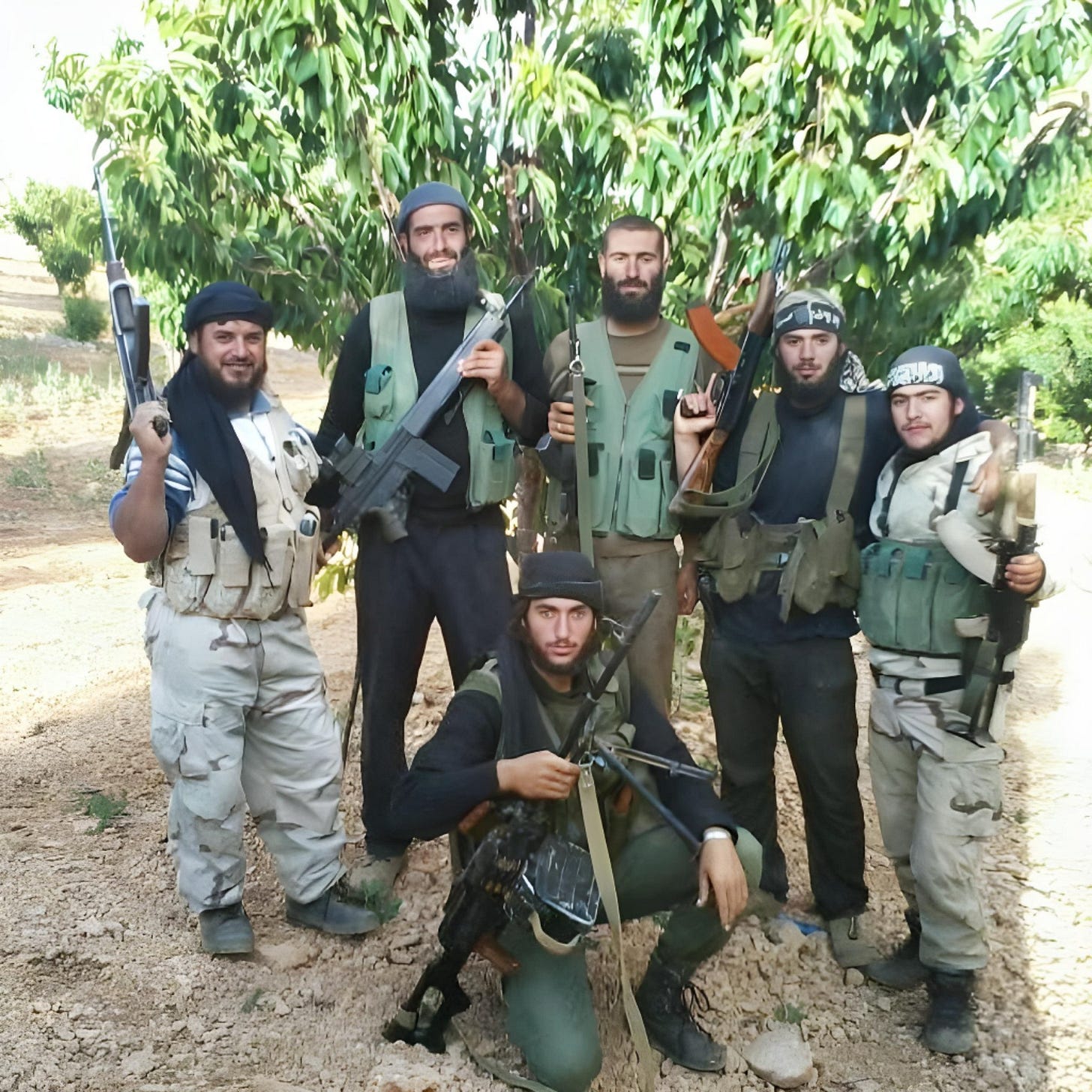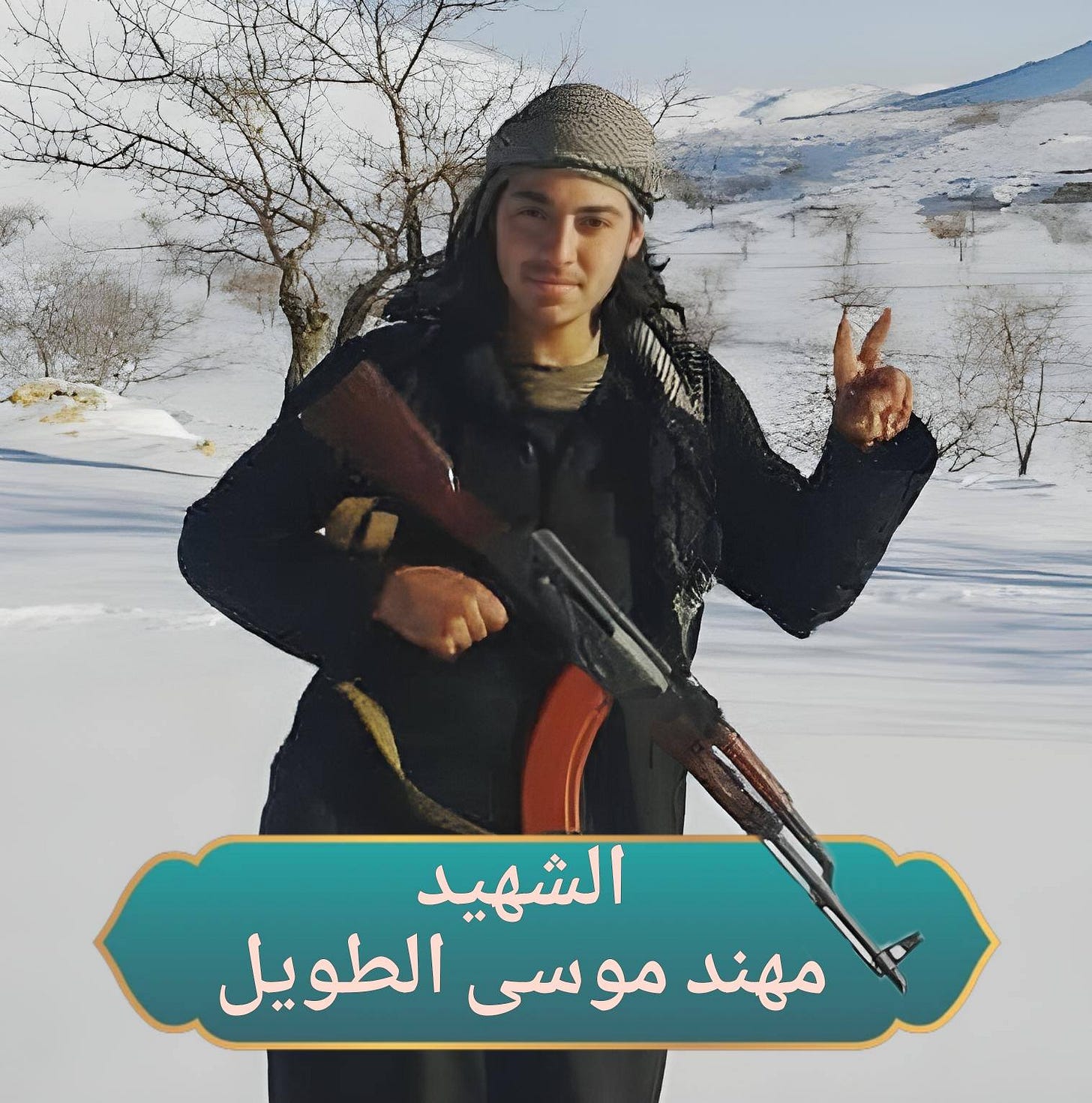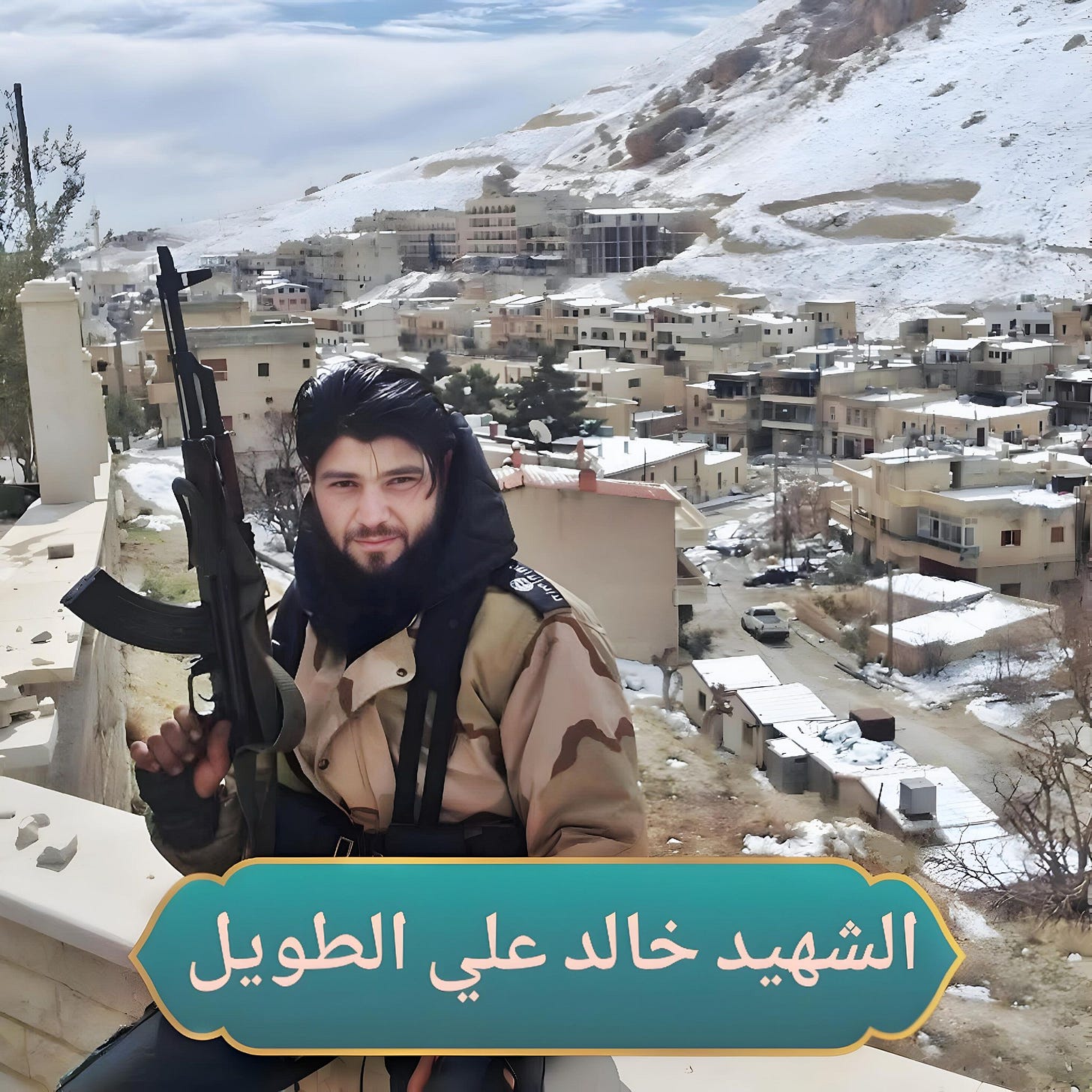Archive: 'Martyrs' of Jub'addin
Post in Western Neo-Aramaic
The question of what to call the conflict in Syria that has now resulted in the overthrow of the Assad regime long attracted controversy. For some, calling the conflict a ‘civil war’ detracted from the courage of the uprising against the regime and suggested some sort of moral equivalency between the regime and the uprising. Therefore, the only acceptable term was ‘revolution.’ During a visit to the Azaz area in northern Syria in 2014, I remember fighters of the Northern Storm Brigade raising the issue of terminology.
In my view, however, it is reasonable to view the conflict as having been both a revolution and a civil war: a revolution because it has now resulted in the deposition of a one-party dictatorship, but also a civil war because large numbers of Syrians fought on both the side of the regime and the insurgency against it, and it was Syrians doing the bulk of the fighting on both sides. Even if the proportion of a population standing by a regime in a country’s internal conflict only constitutes a minority, the term ‘civil war’ is not inaccurate. Put another way, one can morally support a revolutionary cause while still using the term ‘civil war’ in a way that does not necessarily imply moral equivalency between those fighting against a regime and those standing by it.
The village of Jub‘addin is a useful case-in-point. One of the three villages in the Qalamun region where Western Neo-Aramaic is spoken, Jub‘addin (Sunni Muslim) remained under regime control throughout the war and had dozens of its men killed fighting on the side of the regime. One might therefore be tempted to say that the village as a whole ‘stood by the regime.’ However, the village also has at least 28 ‘martyrs’ from among those who fought on the side of the cause of the revolution and insurgency against the regime. This post documents those individuals, together with a brief introductory post in Western Neo-Aramaic (written by Muhammad Fuddah from Bakh‘a) on the concept of a ‘martyr’ during the war in Syria. I also provide an English translation of that post.
——————————————-
من هوا شهيدو؟ شهيدو يلي مدوفع عن وطني وتيذوي وذيني . بثورا سوروي شهدو حقيقوين هم ثورو يلي اطعن سلوحا حتى يحررو البلودن من نظوما مجرمو واحتلولا اجنبو . خن ثوكنا وطنويثا حقيقوي تو اخت عم مشو وطنويثا مزيفة وزويع منظوما ورئيسا .
حيلا منومثا مضنا انو مروي الغبعوذ كلن شبيحا لان حيلا من ثيذو ويبن عم النظوما والدفوع الوطني ليكن حقيقتا انو شبوي الغبعوذ ويبن بروث الكريثا واطعن سلوحا واشتغل عم الثورة سوروي وعدد الشهداء حولي عسر وثمون شهيد وبنا منشورا عنمكتمن اشموي الشهيدو حتى لاينشيهم تاريخا . نمشعلل لالو ان يتقبلن
Who is a martyr? A martyr is the one who defends his homeland, people and religion. In the Syrian revolution the true martyrs are the revolutions who bore arms to liberate their country from the criminal regime and foreign occupation. This is true patriotism as opposed to fake patriotism and fear of the regime and president.
Many people have thought that the people of Jub‘addin are all shabiha because of those who were in the ranks of the regime and the National Defence, but the truth is that youth of Jub‘addin were outside the village and bore arms and worked with the Syrian revolution, and the number of martyrs is around 28 martyrs. In this post we document the names of the martyrs so that history does not forget them. We ask God to accept them.
———————————
Some of those from Jub‘addin who fought against the regime.
Names of ‘martyrs’
(al-Tawil)
1. Ali Abd al-Ali al-Tawil
2. Muhammad Ali al-Tawil
3. Khalid Ali al-Tawil
4. Muhannad Musa al-Tawil
Muhannad Musa al-Tawil
Khalid Ali al-Tawil
(Isa)
5. Rabi‘ Yusuf Isa
6. Omar Yusuf Isa
7. Muhammad Ahmad Isa
8. Omar Ahmad Isa
(‘Ubada)
9. Muwaffaq Muhammad ‘Ubada
10. Khalid Muhammad ‘Ubada
11. Khalid Muhammad Jum‘a ‘Ubada
12. Ma‘an Muhammad Khayr ‘Ubada
13. Omar Ahmad ‘Ubada
(Khattab)
14. Osama Ali Khattab
15. Ali Muhammad Khattab
16. Khalid Mahmud Khattab
(al-Halabi)
17. Omar Abdullah al-Halabi
18. Aymenn Abdullah al-Halabi
(Najm)
19. Muhammad Khalid Najm
20. Muhammad Omar Najm
(Diyab)
21. Ali Mahmud Diyab
22. Khalid Jaal Diyab
(Damen)
23. Munir Ali Damen
(Fawzi)
24. Bassam Muhammad Fawzi
(Shibli)
25. Basil Mahmud Shibli
(Saleh)
26. Qasim Sultan Saleh
(Hasun)
27. The media activist Muhammad Ali Fawaz Hasun (Aamer al-Qalamuni)
(As‘ad)
28. Mu‘ayyad Hasan As‘ad





For somebody who has become acquainted with the term 'revolution' by studying those historical processes where the use of this word is undisputed (the Copernican revolution, the French revolution, the Russian revolution...), the way Arab masses have appropriated this word (or translate the Arabic word ﺛَﻮﺭَﺓ) inevitably sounds a bit too short of meaning (or too inflated) for the contexts where it has more recently popped up. Many Lebanese people refer to the largely unconsequential protest movement that followed the 2019 financial crisis as "revolution" or ﺛَﻮﺭَﺓ. At the same time, Saddam Hussein called himself a revolutionary, and Iraqi institutions under the Ba´th party used to have revolutionary names such as Revolutionary Command Council and so on. Similar debates exist in Egypt, Sudan, Tunisia, Libya... The same can be said about the 'color revolutions' in the post-Soviet space. It appears to me that ﺛَﻮﺭَﺓ or revolution has become another 'empty signifier' carrying overall positive connotations (contrary to the period where it was a very divisive word) but imprecise meaning, so I believe there are much more precise words that we can use for analysis. Interestingly, I also know several individuals who reject the use of the term 'civil war' to describe the 1975-1990 Lebanese conflict or the ongoing armed conflict in Sudan with some arguments that would be long to describe here, but that in essence tell me that there is a negative or distinctive connotations around that term different from how it is used in English or other European languages.
Also, I am not entirely convinced about the expression 'one-party dictatorship' to describe the previous Syrian government system. As a matter of fact, there were several parties in the Syrian government, and this is reflected by the fact that the new government has banned at least 11 political parties (those forming the National Progressive Front) and not just one. Even the Syrian Constitution formally stated (art. 8) that political pluralism was one of the principles of the state and admitted the participation in politics of other parties (contrary to, for example, the 1933 German law that explicitly stated that ‘the National Socialist German Workers' Party is the only political party in Germany’). Of course some would say that the presence of those parties was just a façade and this did not amount to a real multi-party system, but you would also find many Syrians saying that the Syrian Ba´th was also a façade to give some false ideological legitimacy or appearance of a proper political system to a predatory clique of families who believed the country, its people and its wealth belonged to them. Regardless of what one may think that political system really was, I think it is misleading to overlook these formal aspects.
a better term for the conflict would be "uprising in support of the zionists"